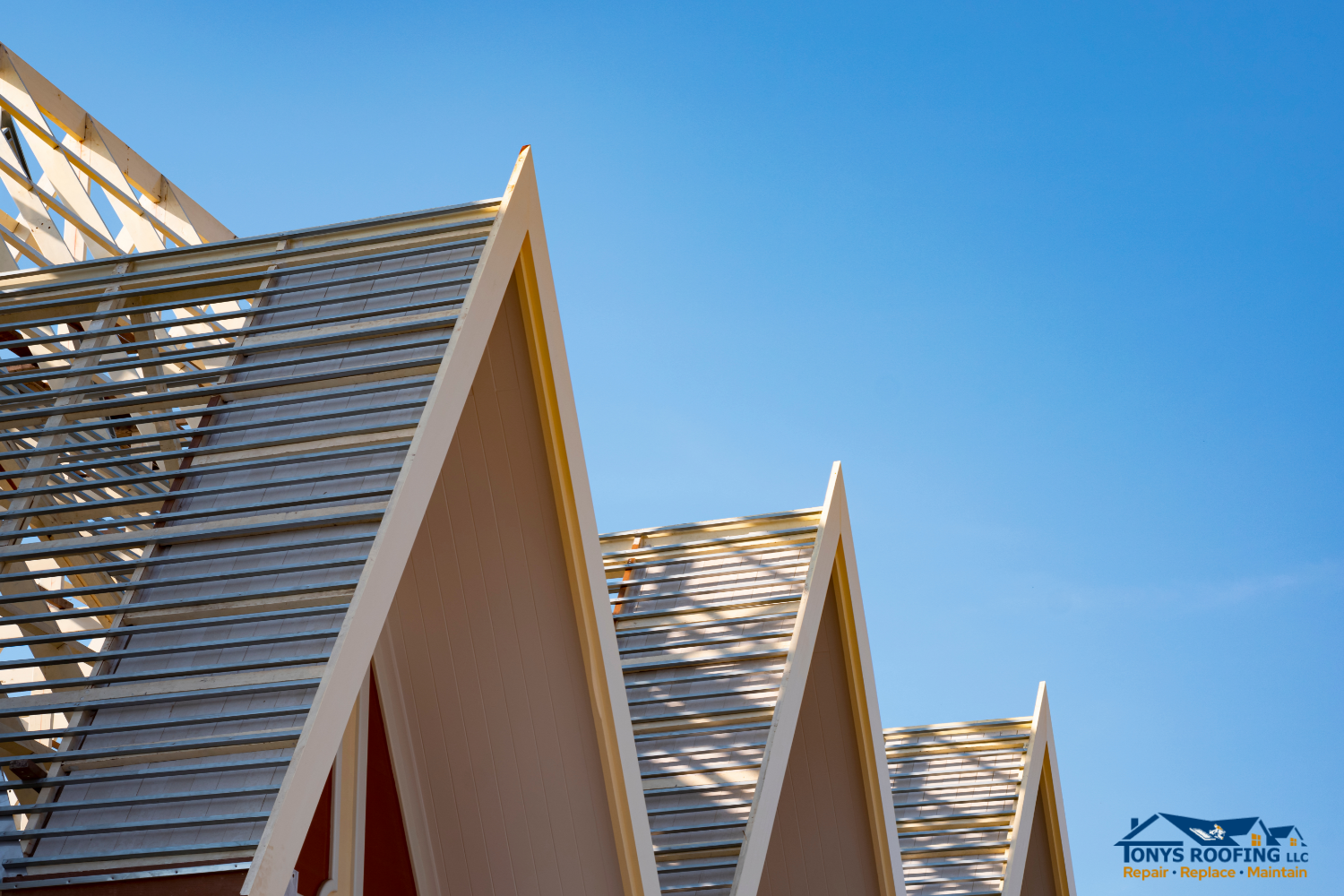When it comes to building or renovating a home, one of the most crucial decisions you’ll face is choosing the right roof type. The roof not only protects your home from the elements but also plays a significant role in its overall aesthetics. With a wide range of options available, understanding different roof types can be overwhelming for beginners.
In This Guide, We’ll Explore Some Of The Most Common Roof Types, Their Features, And Considerations To Help You Make An Informed Decision
1. Gable Roof:
The gable roof is one of the most popular and recognizable roof types. It features two sloping sides that meet at a central ridge, forming a triangular shape. Gable roofs are known for their simplicity and excellent water runoff capabilities. They provide ample attic space, and ventilation, and are relatively affordable to construct. However, they may be prone to damage in high-wind areas if not properly braced.
2. Hip Roof:
A hip roof has slopes on all four sides, which meet at the top to form a ridge. This design offers increased stability and excellent resistance to high winds. Hip roofs are known for their aesthetic appeal and provide great rain and snow-shedding ability. They also offer additional attic space and can be a good choice for areas prone to hurricanes or heavy snowfall. However, hip roofs can be more expensive to build due to the complex design.
3. Mansard Roof:
The mansard roof, also known as a French roof, is a distinct roof style characterized by its double slopes on all four sides. The lower slope is steeper, while the upper slope is relatively flat. Mansard roofs are popular for their elegant and timeless appearance. They provide additional living space in the form of an attic or a full story, making them ideal for expanding living areas. However, the complexity of construction and maintenance can be higher compared to other roof types. 4.
4. Flat Roof:
As the name suggests, flat roofs have a minimal slope, almost appearing completely flat. They are commonly found in commercial buildings but are also used in modern residential architecture. Flat roofs are cost-effective, easy to construct, and provide additional outdoor living space. However, they require proper waterproofing and regular maintenance to prevent water pooling and leaks. Flat roofs are not suitable for areas with heavy rainfall or snow accumulation.

5. Shed Roof:
A shed roof is a simple, single-sloping roof that slants in one direction. It is commonly used for sheds, garages, or home additions. Shed roofs are easy to build and cost-effective, making them a popular choice for smaller structures. They provide good water runoff and can accommodate large windows for natural light. However, shed roofs offer limited attic space and may not be suitable for larger homes or areas with heavy snow loads.
6. Gambrel Roof:
The gambrel roof is often associated with traditional barns and Dutch Colonial-style homes. It features two slopes on each side, with the lower slope being steeper than the upper slope. Gambrel roofs offer a classic and charming appearance while providing ample attic space. They are efficient at shedding water and snow, making them suitable for areas with harsh climates. However, their design can be complex and may require additional maintenance to prevent leaks.
7. Butterfly Roof:
The butterfly roof is a unique and modern roof type that resembles the shape of a butterfly’s wings. It consists of two panels that slope downward in a V-shape, meeting at a valley in the middle. Butterfly roofs offer a distinctive and striking architectural feature, allowing for large windows and increased natural light. They are also designed to collect rainwater for eco-friendly purposes. However, the complexity of construction and the potential for water leakage requires careful planning and installation.
8. Green Roof:
Green roofs, also known as living roofs or rooftop gardens, are becoming increasingly popular due to their environmental benefits. They feature a layer of vegetation on top of a waterproofing system. Green roofs provide insulation, reduce stormwater runoff, improve air quality, and create green space in urban areas. However, they require specialized design, additional structural support, and ongoing maintenance.

When choosing a roof type, consider factors such as your climate, budget, architectural style, and personal preferences. It’s also essential to consult with a professional roofing contractor or architect to ensure the chosen roof type is suitable for your specific needs and meets local building codes.
In conclusion
Understanding different roof types is crucial when planning a new construction or renovation project. Each roof type has its own unique features, advantages, and considerations. By familiarizing yourself with the options available and seeking professional guidance, you can make an informed decision that enhances the functionality, aesthetics, and longevity of your roof.

